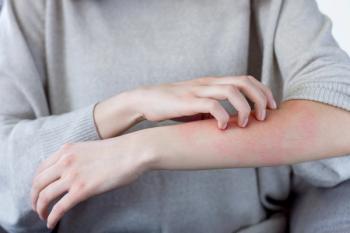
New AAD Acne Guidelines Warn About High Cost, Access to New Treatments
New acne guidelines from the American Academy of Dermatology recommend Winlevi (clascoterone), a topical treatment, and Seysara (sarecycline), a narrow-spectrum tetracycline, but qualify the recommendation as conditional because of concerns that the high cost may affect equitable access to treatment,
The American Academy of Dermatology has issued updated guidelines for the treatment of acne that strongly recommend many of the mainstays of acne care but also boost some new expensive treatments that may challenge payer coverage policies.
The guidelines include some cautionary language about the use of systemic antibiotics leading to antibiotic resistance and other antibiotic-associated complications, noting that in 2021 dermatologists prescribed more oral antibiotics per clinician than any other specialty group and that most of the antibiotics were for acne treatment.
The guidelines, an update of 2016 recommendations, endorse the use of Winlevi (clascoterone), a topical antiandrogen that was approved by the FDA in 2020. The guidelines categorize the “certainty of evidence” for Winlevi (pronounced WIN-lev-ee) as high but give it conditional recommendation, citing high cost that “may impact equitable acne treatment access.” A 60-gram tube of Winlevi was
The guidelines were
In an email response today to questions from Managed Healthcare Executive about the guidelines,
“It will be important for payers to provide coverage to ensure that patients have access to these valuable new treatments,” Barbieri commented.
Barbieri and the other guideline writers also conditionally recommended minocycline and azithromycin as systemic antibiotics for acne while strongly recommending doxycycline. According to Barbieri, minocycline and doxycycline are currently prescribed in equally for acne but that may change with these guidelines. There is no evidence to suggest minocycline is more effective than doxycycline, according to Barbieri, and the guidelines mention rare potential adverse effects, including vertigo,
“We should consider whether reducing use of minocycline might be beneficial to our overall care of patients with acne,” Barbieri wrote.
In addition to recommendations, the guidelines have “good practice statement” that add some nuance to the recommendations. Limiting the use of systemic antibiotic “when possible” because of antibiotic resistance is one of those good practice statements. Another one is a suggestion to monitor patients taking isotretinoin for severe acne with liver function and lipid tests but not complete blood count tests in otherwise healthy patients.
The guidelines say that it is important to individualize acne treatment with shared decision-making because of the many treatment choices. But they also include a schematic that emphasizes that mild cases mild cases be treated with topical treatments with systematic antibiotics, hormone agents and isotretinoin reserved for moderate to severe cases. Here is a list of the six topical treatments that were strongly recommended and three that were conditionally recommended:
And here are the recommendations for systemic antibiotics:
Note that doxycycline is the only one that is strongly recommended.
The guidelines say that that there isn’t enough evidence to develop recommendations for many of the of “physical modalities” use to treat acne, such as acne lesion extraction, chemical peels, microneedle radiofrequency devices and laser and light-based therapies. But Barbieri and his colleagues recommended against adding pneumatic broadband light to adapalene gel, pointing to research showing that it did not reduce acne lesions and was associated with hyperpigmentation and
The recommendation against was qualified as being conditional.
The guidelines take the stance of evidence being sufficient to pass judgment on complementary and alternative therapies, such as topical tea tree oil, topical green tea, oral pantothenic acid or topical niacinamide.
The results on a low-glycemic load diet are inconsistent, say the guidelines: Several randomized trials show beneficial effects on acne, but they cite one with 84 subjects that did not. The verdict on low-dairy, low whey, omega-3 acids and chocolate was no recommendation for insufficient evidence.
Newsletter
Get the latest industry news, event updates, and more from Managed healthcare Executive.





















































